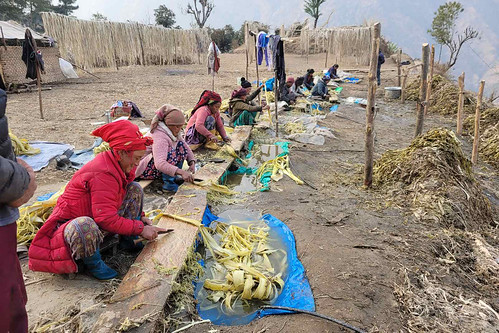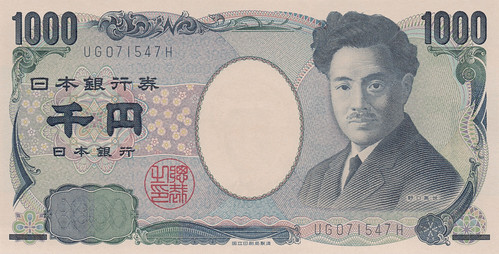
PREV ARTICLE
NEXT ARTICLE
FULL ISSUE
PREV FULL ISSUE
NEPAL CROP MAKES JAPANESE BANKNOTE PAPERPablo Hoffman also passed along this article about the making of paper for Japanese banknotes. Thanks - interesting. -Editor Nepal's unique ecological diversity and topography gives the country many cash crops, but there is one crop that is actually turned into cash. In recent years, there has been a dramatic rise in exports of the bark of a Himalayan bush, Edgeworthia gardneri, prized in Japan to print currency notes, passports, envelopes, postage stamps, and other stationery.
According to Narayan Manandhar's Plants and People of Nepal, techniques to make paper by hand are believed to have been introduced to Nepal in the 14th century from China. The Tamang community in Rasuwa and Dolakha have used the bark of the Lokta plant, the more famous wildcrafted, handmade paper indigenous to Nepal, for at least 700 years. Nepal began exporting the paper bush to Japan over a decade ago and it has already served as a replacement for Mitsumata which was traditionally used to make Japanese paper. "While Japanese paper is considered the best in the world," says Kiran Kumar Dangol of Nepal Handmade Paper Association, "Nepali paper is seen as stronger and better quality than most paper abroad, which has led to its high demand." The bushes are harvested five years after being planted, usually from October to February, during which time it has a distinct white colour. High water-content Argeli is greenish in colour and is not considered suitable or of good quality. The inner fibrous cover of the stem is used to make paper and the outer bark to make ropes, while some places also use its roots to cure scabies.
To read the complete article, see:
Laurence Edwards passed along a more recent New York Times article on the topic. -Editor
To read the complete article, see:
Wayne Homren, Editor The Numismatic Bibliomania Society is a non-profit organization promoting numismatic literature. See our web site at coinbooks.org. To submit items for publication in The E-Sylum, write to the Editor at this address: whomren@gmail.com To subscribe go to: https://my.binhost.com/lists/listinfo/esylum All Rights Reserved. NBS Home Page Contact the NBS webmaster 
|


